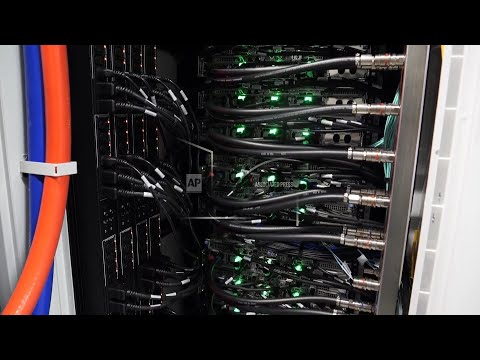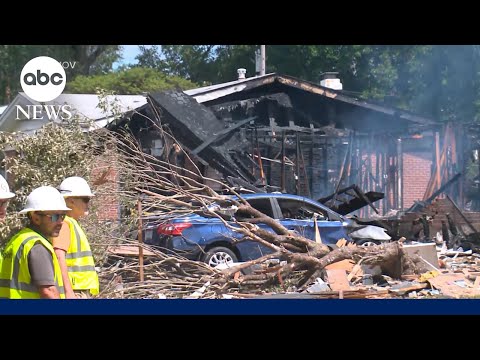(24 Jul 2025)
RESTRICTION SUMMARY:
ASSOCIATED PRESS
Berkeley, California – 29 May 2025
1. Various of Doudna supercomputer facility at Lawrence Berkeley National Laboratory
2. Pan inside Doudna supercomputer facility at Lawrence Berkeley National Laboratory
3. Official next to equipment inside Doudna supercomputer facility at Lawrence Berkeley National Laboratory
ASSOCIATED PRESS
Portland, Oregon – 24 July 2025
4. SOUNDBITE (English) Amanda Smith, senior scientist at research organization Project Drawdown:
"AI is a growing portion of the energy usage of data centers. And data centers are a growing proportion of the electricity use in the US. And so we have to be paying attention to that. We have to thinking, anytime we see a demand growing in a particular area, how are we going to meet that, because power generation always has environmental impacts. But what we know is that power generation via fossil fuels tends to have much tougher environmental impacts. Both on climate change and on local populations who suffer the impacts of the pollution that it causes while it’s operating."
ASSOCIATED PRESS
ARCHIVE: Hackberry, Louisiana – 1 April 2022
5. Various of flare burning at Venture Global natural gas facility
ASSOCIATED PRESS
Portland, Oregon – 24 July 2025
6. SOUNDBITE (English) Amanda Smith, senior scientist at research organization Project Drawdown:
"Often we’re not directly matching up a data center with a power source, but we’re putting a data into a grid which is connected. And we’re also putting new power sources on that grid. Now there are some exceptions, but that’s typically what happens. Typically the most common thing that happens to meet increased demand is that we keep an existing power plant online. Most of our existing power plants are still producing. Electricity via fossil fuels, and most often, that’s natural gas if we need a new power source quickly."
ASSOCIATED PRESS
ARCHIVE: Hackberry, Louisiana – 1 April 2022
7. Various of Cameron LNG (liquefied natural gas) export facility
ASSOCIATED PRESS
Copenhagen, Denmark – 24 July 2025
8. SOUNDBITE (English) Benjamin Lee, University of Pennsylvania Engineering Professor:
"Most of the energy goes into powering the graphics processing units, the compute, and as these GPUs generate answers and draw power doing so, they also generate heat, which means we need water to cool those processes down to keep the machine room temperatures and a nice stable temperature. So we are talking about massive growth in data and infrastructure, energy use, and water use."
ASSOCIATED PRESS
Cambridge, UK – 16 April, 2025
9. Tilt down of Dawn, Cambridge University’s powerful supercomputer
10. Close of bank of graphic processing units (GPUs)
11. Wide of cabinets housing Dawn and employee organising wires on ladder
ASSOCIATED PRESS
Copenhagen, Denmark – 24 July 2025
12. SOUNDBITE (English) Benjamin Lee, University of Pennsylvania Engineering Professor:
"Before the arrival of generative AI, there was a lot of optimism among all of the big tech, hyperscaler data center operators in terms of achieving carbon-free compute. And the idea here would be that we would be net zero. You would consume some amount of energy, some amount of electricity in your data centers, and you would generate a corresponding amount of wind and solar energy to match that consumption."
ASSOCIATED PRESS
ARCHIVE: Lakewood, Ohio – 17 April 2025
13. Various aerials of workers of solar installer YellowLite working to put panels on a home ++MUTE++
ASSOCIATED PRESS
Copenhagen, Denmark – 24 July 2025
ASSOCIATED PRESS
ASSOCIATED PRESS
Find out more about AP Archive: http://www.aparchive.com/HowWeWork
Twitter: https://twitter.com/AP_Archive
Facebook: https://www.facebook.com/APArchives
Instagram: https://www.instagram.com/APNews/
You can license this story through AP Archive: http://www.aparchive.com/metadata/youtube/98272f1dfb674ed8889fe81a93a1a74e
Author: AP Archive
Go to Source
News post in July 30, 2025, 12:04 am.
Visit Our Sponsor’s:
News Post In – News





